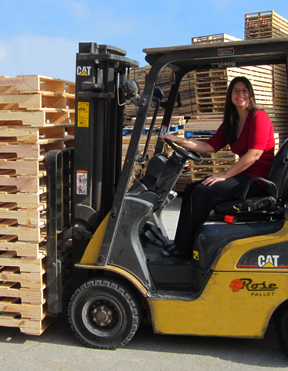4 Questions to Ask When Purchasing Pallets
While they may seem simple enough—a rigid platform used as a base for storing or shipping goods, pallets are not...
While they may seem simple enough—a rigid platform used as a base for storing or shipping goods, pallets are not...

 While they may seem simple enough—a rigid platform used as a base for storing or shipping goods, pallets are not designed as a one-size-fits-all product. That is why hundreds of different pallet sizes are used around the world. But, in the United States, there are two pallet styles that are commonplace.
While they may seem simple enough—a rigid platform used as a base for storing or shipping goods, pallets are not designed as a one-size-fits-all product. That is why hundreds of different pallet sizes are used around the world. But, in the United States, there are two pallet styles that are commonplace.
The block style has blocks (rectangular, square, multi-sided, or cylindrical deck spacer) between the pallet decks or beneath the top deck and is suitable for a wide range of handling because it’s open on all four sides. The stringer style has stringers (parallel pieces of timber used to support and space the deck components) between the deckboards or beneath the panel deck that allow partial 4-way access if stringers are notched; otherwise, two-way access is available.
So, which one is right for your organization? Answer these four questions before you purchase your next pallet supply:
While many pallet providers can help you select a pallet based on your answers, consider whether they can offer a continuous, uninterrupted supply of your chosen pallet. Oftentimes, needs arise unexpectedly and companies may have an unplanned, heavy demand for pallets. Be sure to partner with a provider that can deliver ‘just in time.’ Also, look for a company that can help you manage your pallet inventory effectively so that you never have to worry about a shortage of pallets.
 Apr 06, 2022
Apr 06, 2022
Do you know your pallet specs? It seems like a basic question, but many buyers are stumped. And there is a common misconception that it doesn’t really matter—pallets aren’t complicated so any variety should work, right? Don’t be fooled…
continue reading double_arrow Sep 28, 2016
Sep 28, 2016
In addition to industry news, tips, and trends, our blog is also a great place to learn about our employees—the...
continue reading double_arrow






